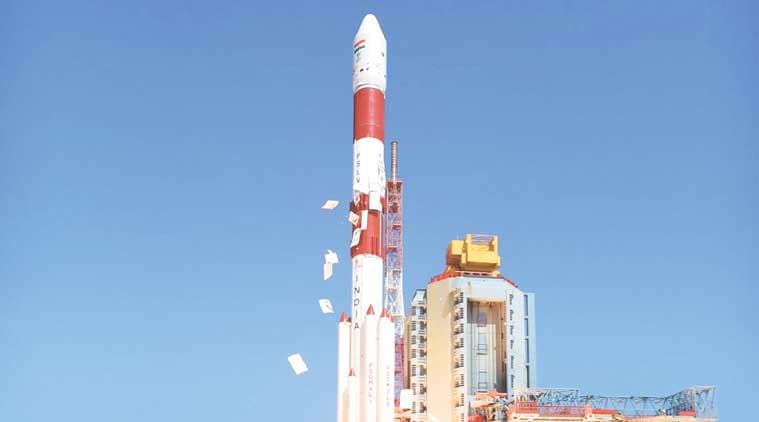- India
- International
ISRO’s 20-satellite launch: Explaining the historic feat in Sriharikota
PSLV-C34 rocket injected 20 big and small satellites into Polar Sun-synchronous Orbits on Wednesday morning. It was an achievement for ISRO, and a record.
 The number of satellites that can be carried at a time is restricted by the space available on the rocket and its carrying capacity in terms of weight.
The number of satellites that can be carried at a time is restricted by the space available on the rocket and its carrying capacity in terms of weight.
Why is Wednesday’s launch significant?
ISRO has never launched so many satellites in a single mission. In June 2008, the PSLV-C10 had carried 10 satellites with itself, which was a world record at that time. Since then, that record has been overtaken several times by Russian and American rockets.
WATCH VIDEO | ISRO 20-Satellite Launch: What’s The Big Deal?
In June 2014, the Dnepr rocket of Russia carried 37 payloads, which is now the record. Six months before that, in January 2014, the Antares rocket developed by Orbital Sciences Corporation, an American company, took 34 satellites to space. The Dnepr rocket had carried 32 payloads on November 21, 2013 as well. Just two days earlier, the Minotaur-I, once again by the Orbital Sciences Corporation, had 29 satellites on board.
[related-post]
Watch Video: What’s making news
What does it take to carry so many satellites?
The number of satellites that can be carried at a time is restricted by the space available on the rocket and its carrying capacity in terms of weight. The XL variant of PSLV, which was used for Tuesday’s launch, can, for example, carry 1,750 kg of payloads to the Sun-synchronous Polar Orbit (SSPO), and much more — 3,800 kg — to the Lower Earth Orbit. Theoretically then, Wednesday’s rocket, which had 1,288 kg on board, could have carried more payloads.


It did help that 14 of the 20 payloads on the mission were very small satellites. The two from academic institutions weighed just 1.5 kg and 1 kg, while the 12 Dove satellites from the US were less than 5 kg each.
But satellites also have to be stacked in the rocket in certain configurations so that they can be ejected in the desired orbits, and it requires engineering innovations to include more of them.
The PSLV-C34 ejected each of the individual satellites itself. Many rockets use ‘container’ satellites to carry a bunch of sub-satellites. The rocket injects the container which, at a later time, fires the sub-satellites into their respective orbits. The record-breaking Dnepr rocket, for example, had four of its payloads packed into a bigger satellite. The Antares rocket had 33 small satellites loaded on a spacecraft that took them to the International Space Station.
Dnper’s November 2013 mission placed 23 satellites itself, while the remainder were packed inside other satellites. However, all the 29 satellites on the Minotaur mission separated individually from the rocket.
Is it only about numbers then?
Packing a rocket with a large number of satellites does not involve any major technological leap. It is more about utility and efficiency, and about reducing mission costs. It is an effort towards efficient utilisation of available space and economising the cost of the mission. Seventeen of the 20 payloads on the latest PSLV mission were from foreign countries. Each one of them would have had to buy the slot on the rocket, thereby bringing in revenue for ISRO.
More Explained
EXPRESS OPINION
Apr 26: Latest News
- 01
- 02
- 03
- 04
- 05










































